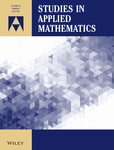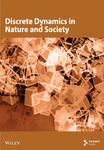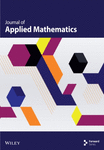About this Journal
Aims and scope
The purpose of Complexity is to report important advances in the scientific study of complex systems. Complex systems are characterized by interactions between their components that produce new information — present in neither the initial nor boundary conditions — which limit their predictability. Given the amount of information processing required to study complexity, the use of computers has been central to complex systems research.
This Open Access journal publishes high-quality original research, as well as rigorous review articles, across a broad range of disciplines. Studies can have a theoretical, methodological, or practical focus. However, submissions must always provide a significant contribution to complex systems.
Concepts relevant to Complexity include:
- Adaptability, robustness, and resilience
- Complex networks
- Criticality
- Evolution and emergent behaviour
- Nonlinear dynamics
- Pattern formation
- Self-organization
Methods used within the scientific study of complex systems frequently include:
- Agent-based modelling
- Analytical methods
- Cellular automata
- Computational methods
- Data science
- Game theory
- Machine learning
- Statistical mechanics
Applications of complex systems may be related to the following disciplines, among others:
- Computational social science
- Digital epidemiology
- Ecology
- Economics
- Engineering
- Socio-technical systems
- Statistical linguistics
- Systems biology
- Urban systems
Work that considers the above methods or applications, but which is not applied to the study of complex systems will be considered out of scope. For the avoidance of doubt, ‘complex’ in the context of this journal should not be considered merely as a synonym for difficult or complicated.
Bibliographic information
ISSN: 1076-2787 (Print)
ISSN: 1099-0526 (Online)
DOI: 10.1155/8503
Abstracting and Indexing
Discoverability
The journal's articles appear in a wide range of abstracting and indexing databases, and are covered by numerous other services, as given in the full list below. The following link provides more information about Wiley's approach to making articles more discoverable.
Indexing Information
- ACM Guide to Computing Literature (ACM)
- BIOBASE: Current Awareness in Biological Sciences (Elsevier)
- Biological Abstracts (Clarivate Analytics)
- BIOSIS Previews (Clarivate Analytics)
- CAS: Chemical Abstracts Service (ACS)
- CompuMath Citation Index (Clarivate Analytics)
- Computer & Communications Security Abstracts (Emerald)
- Computer and Information Systems Abstracts (ProQuest)
- Computer Science Index (EBSCO Publishing)
- Current Index to Statistics (ASA/IMS)
- Directory of Open Access Journals (DOAJ)
- INSPEC (IET)
- Journal Citation Reports/Science Edition (Clarivate Analytics)
- Mathematical Reviews/MathSciNet/Current Mathematical Publications (AMS)
- PSYNDEX (ZPID)
- PubMed (NLM)
- RePEc: Research Papers in Economics
- Science Citation Index Expanded (Clarivate Analytics)
- SCOPUS (Elsevier)
- The DBLP Computer Science Bibliography (University of Trier)
- Web of Science (Clarivate Analytics)







